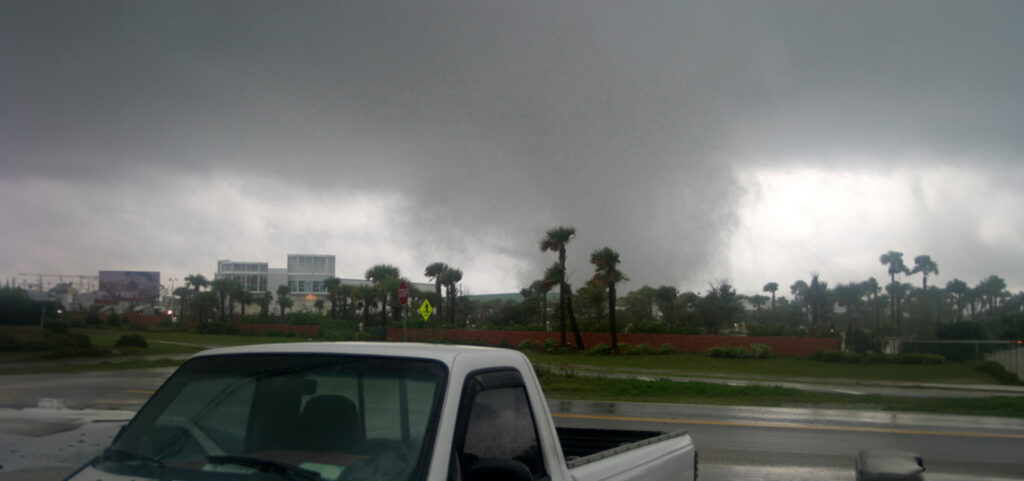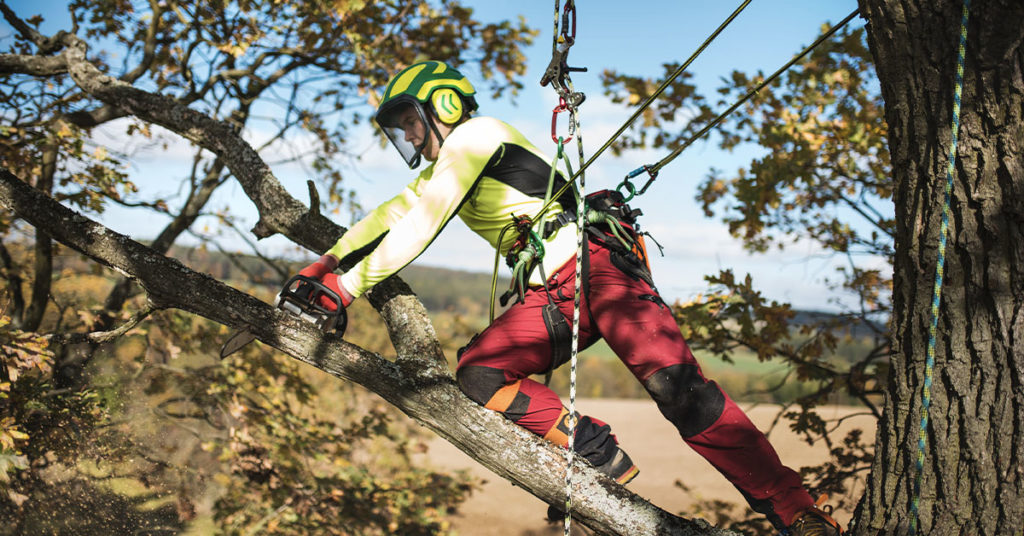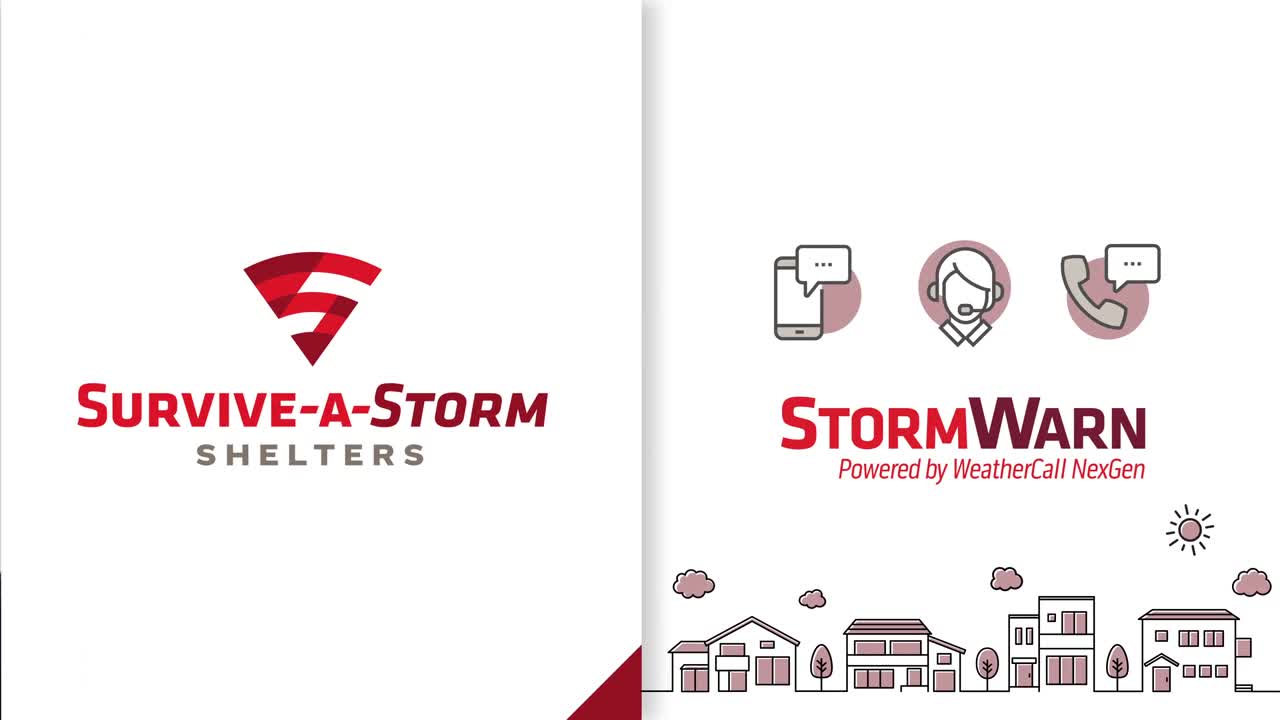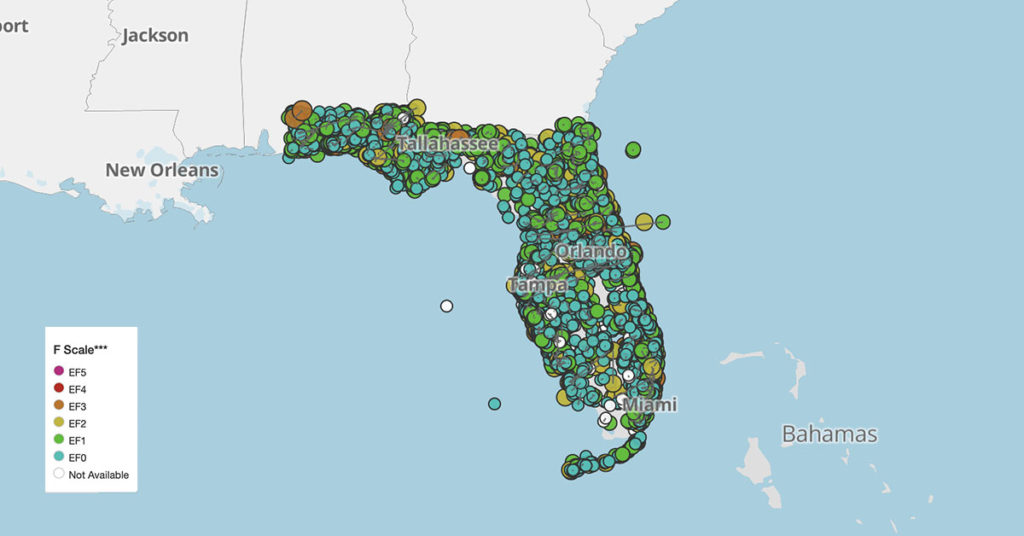When it comes to tornadoes in the United States, Florida is unique in that it has the highest frequency of tornadoes per area. The most active period for tornadoes in Florida is from February to April, but Florida has experienced tornadoes in every month and season.
- The deadliest tornado in Florida history occurred on February 22, 1998, in Kissimmee, killing 42 people and injuring 260.
- The strongest tornado in Florida history was an EF4 tornado that hit the Panhandle on February 23, 2019, with wind speeds of up to 170 mph.
- Tornadoes have occurred in all 67 counties in Florida.
- The average number of tornadoes in Florida per year is 54, with an average of three fatalities and 48 injuries.
- Tornadoes can occur at any time of the day or night, but they are most likely to occur in the afternoon and evening.
- Florida is also prone to waterspouts, which are tornadoes that occur over water.
- The most tornado-prone areas in Florida are the central and northern parts of the state.
- The National Weather Service in Jacksonville, Florida, issues the most tornado warnings of any office in the country.
Documented Florida tornadoes since 1950
Preparing for Tornadoes in Florida
Tornadoes are a common occurrence in Florida, and they can cause significant damage to homes and infrastructure. These powerful storms can form quickly and without warning, making it crucial for individuals and communities to be prepared in case of a tornado.
One of the most important steps in tornado preparation is to have a tornado plan in place. It is important to have an emergency kit stocked with supplies such as water, non-perishable food, and a first-aid kit. The emergency plan should include where to go if a tornado strikes, such as a basement or interior room on the lowest level of a building.
In Florida, where not everyone is able to go underground due to their proximity to the coast, it's important to know that above-ground shelters are available, and they can be built to be just as safe as underground shelters, and they are typically less expensive.
In addition to having a plan, it is important to stay informed about weather conditions in the area. Paying attention to weather alerts and warnings from the National Weather Service can help individuals and communities prepare for a tornado before it strikes. One great way to leverage the knowledge of the National Weather Service is to use a location-based tornado alert system like StormWarn. This alert system uses the polygon areas that are specific to each storm, to identify the areas where there is the most hazard and should seek shelter immediately. When subscribers of the service are inside the polygon area, notifications are sent to tell them to get to their shelters immediately. No shelter purchase is required to use the StormWarn service.
Another key aspect of tornado preparation is regular home maintenance, to ensure that homes and buildings are structurally sound. This includes maintaining roofs, windows, and doors, and securing outdoor items such as lawn furniture and decorations that could become dangerous projectiles during a tornado.
Finally, it is important to practice tornado drills with family members and coworkers so that everyone knows what to do in the event of a tornado. Regular practice can help reduce panic and confusion during an actual emergency.

Tornado Shelters Near Me in Florida
In Florida, public tornado shelters are typically operated by a county or municipal emergency management agencies. These shelters are designed to provide a safe place for residents to take refuge during a tornado. However, it is important to know that not every county or municipality has public tornado shelters, and their locations vary from county to county.
Additionally, many news stations in Florida provide information on public tornado shelters during severe weather events. You can tune into local news broadcasts or visit their websites for information on shelter locations and availability. In some cases, public buildings such as schools or community centers may be used as tornado shelters during severe weather events. However, it is important to note that not all public buildings will be designated as tornado shelters, and not all counties have facilities for this use. Other times, they may identify commercial buildings that are offering their businesses as a safe area. This might include shopping malls or large retail stores that have been designed to withstand high winds,
In some cases, residents may be advised to seek shelter in their own homes. The best way to do so is in a designated residential tornado shelter within your home. Or, if no such area is available, seek shelter on the lowest level of your home, in an interior room with few (or no) windows.
Wherever your designated place, be sure to have a family plan for tornadoes. Many families find the cost of a residential tornado shelter to be quite affordable since there are shelters that can be placed on existing slabs, or even in a garage.
Florida Tornado Safety Tips
Tornadoes can strike quickly and without warning, so it's important to be prepared with safety tips in mind. Here are some tornado safety tips specifically for Florida:
- Stay informed: Stay tuned to local weather forecasts, particularly during times when severe weather is expected. Listen to news reports and follow your local emergency management agency on social media for updates.
- Have a plan: Create a tornado plan for your family or workplace. Identify a safe place to go, such as a basement or an interior room on the lowest level of a building. Make sure everyone in your household or workplace knows the plan and practices it regularly. Don't have a shelter at work? If you're a manager or the owner, it a good idea to re-think that! Tornadoes aren't on our schedule.
- Keep an emergency kit: Prepare an emergency kit with essential items such as water, non-perishable food, a first aid kit, flashlight, and extra batteries. Keep the kit in a readily accessible location, or inside your residential storm shelter, if you have one.
- Protect your head: If you’re seeking shelter outside of a designated tornado shelter, it’s a good idea to protect your head by wearing a helmet or covering yourself with a thick blanket or mattress. Head injuries are a leading cause of tornado-related deaths and injuries.
- Stay away from windows: Seek shelter in an interior room without windows, or cover windows with blankets or cardboard to help protect against broken glass.
- Be cautious after the storm: Wait for the storm to pass completely before venturing outside. Be cautious of downed power lines, damaged buildings, and other hazards. A location-based tornado alert system, like StormWarn, will deliver an all-clear message to tell you when it’s safe to come out of your shelter.
- Follow instructions from authorities: If you are advised to evacuate, do so immediately. If you are instructed to take shelter, do not delay or hesitate. If you are someone who does tend to wait to evacuate until the last minute, StormWarn might be a good tool for you too, since it’s designed to eliminate sheltering false alarms and only notifies you to take shelter if your home is in the National Weather Service’s polygon for that particular storm.
By following these tornado safety tips, you can help protect yourself and your loved ones during severe weather in Florida.

FAQs About Tornado Shelters in Florida
Q: What are the different types of tornado shelters available in Florida?
A: The geography in Florida does not make it easy to construct underground spaces like basements due to its high water table and soft, porous limestone bedrock. For this reason, the majority of tornado shelters available in Florida are above ground. There could public, or community shelters, usually managed by county or municipal governments, and privately owned shelters, either commercial or residential.
Q: How many public tornado shelters are there in Florida, and where are they located?
A: The number of public tornado shelters in Florida varies by county so there is no concise number of readily available tornado shelters. Contact your local emergency management office or visit floridadisaster.org/shelters for information on locations.
Q: Are there any requirements for building a tornado shelter in Florida?
A: Yes, there are specific guidelines for building tornado shelters in Florida. Visit floridadisaster.org/mitigation/shelters/ for more information. The guidelines for community tornado shelters will typically follow FEMA guidelines.
Q: What should I bring with me to a tornado shelter in Florida?
A: It’s a good idea to bring a weather radio, blankets, pillows, water, non-perishable food, and any necessary medication, as well as charging cords for your devices.
Q: Can pets be accommodated in tornado shelters in Florida?
A: It varies by shelter, so please check with your local emergency management office or visit floridadisaster.org/shelters for information on pet-friendly shelters. If pets are high on your list of priorities during severe weather, you might find that installing your own residential above ground tornado shelter is the way to go.
Q: How long should I stay in a tornado shelter in Florida?
A: You should stay in a tornado shelter in Florida until it is safe to return home or until emergency officials instruct you to leave. Some location-based alerts (mentioned above) are designed to send an “all-clear” once the danger is over.
Q: What are the guidelines for using a private shelter during a tornado in Florida?
A: If you’ll be sheltering in a private tornado shelter, whether it’s yours or belongs to someone else, you may want to ensure that it meets FEMA guidelines, ensuring proper ventilation and emergency exits. Be sure that it is stocked it with emergency supplies, and that there’s a way to communicate with emergency responders. It is also important to inform family, friends, and emergency officials of the location of your private shelter. Visit floridadisaster.org/mitigation/shelters/ for more information on guidelines and building a safe private shelter.
Q: Should a tornado shelter in Florida be equipped with emergency supplies and medical equipment?
A: Yes, a tornado shelter in Florida should be equipped with basic emergency supplies, such as a first aid kit, flashlights, and batteries. Some public shelters may also have basic medical equipment on hand. It is always a good idea to bring your own supplies as well, including any necessary medications, food, water, and blankets. Don’t forget to bring chargers for your devices.
Q: How often are tornado shelters in Florida inspected for safety and maintenance?
A: Tornado shelters in Florida are inspected annually for safety and maintenance.
Q: Are there any special considerations for those with disabilities or access needs in tornado shelters in Florida?
A: Yes, public (community) tornado shelters in Florida are equipped to accommodate individuals with disabilities or access needs. If you’re not sheltering in a public shelter, you’ll need to contact the organization that operates it to ask about accessibility.
Q: Can I bring weapons or firearms into a tornado shelter in Florida?
A: No, weapons or firearms are generally not allowed in tornado shelters for safety reasons. Check with your local emergency management office or shelter for specific guidelines.
Tornado Shelters in Florida
Please contact your local emergency agencies and monitor local news and weather alerts regularly and ensure you're prepared with a disaster supply kit. Stay safe!

Know when severe weather is about to strike and when it's time for you to take shelter with our StormWarn texting program.



